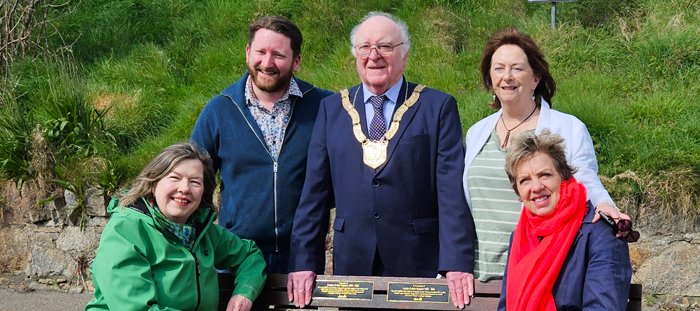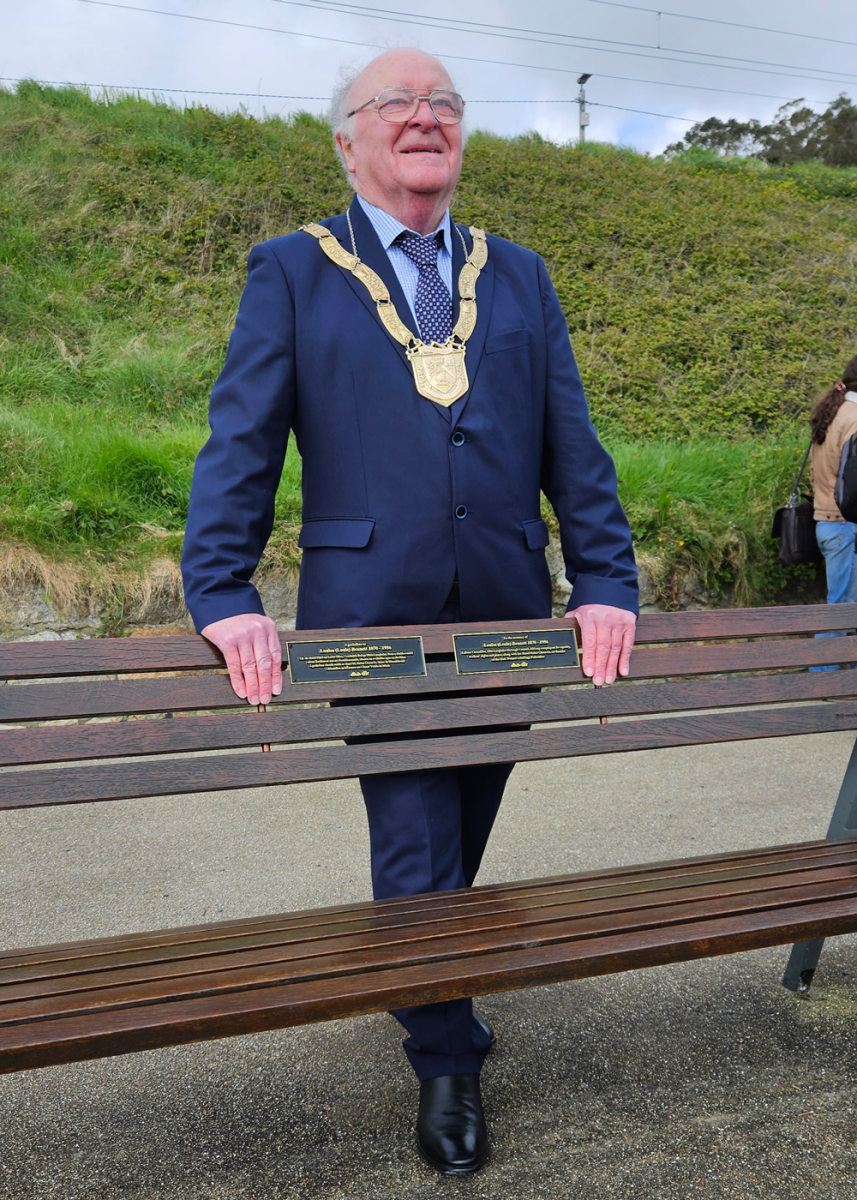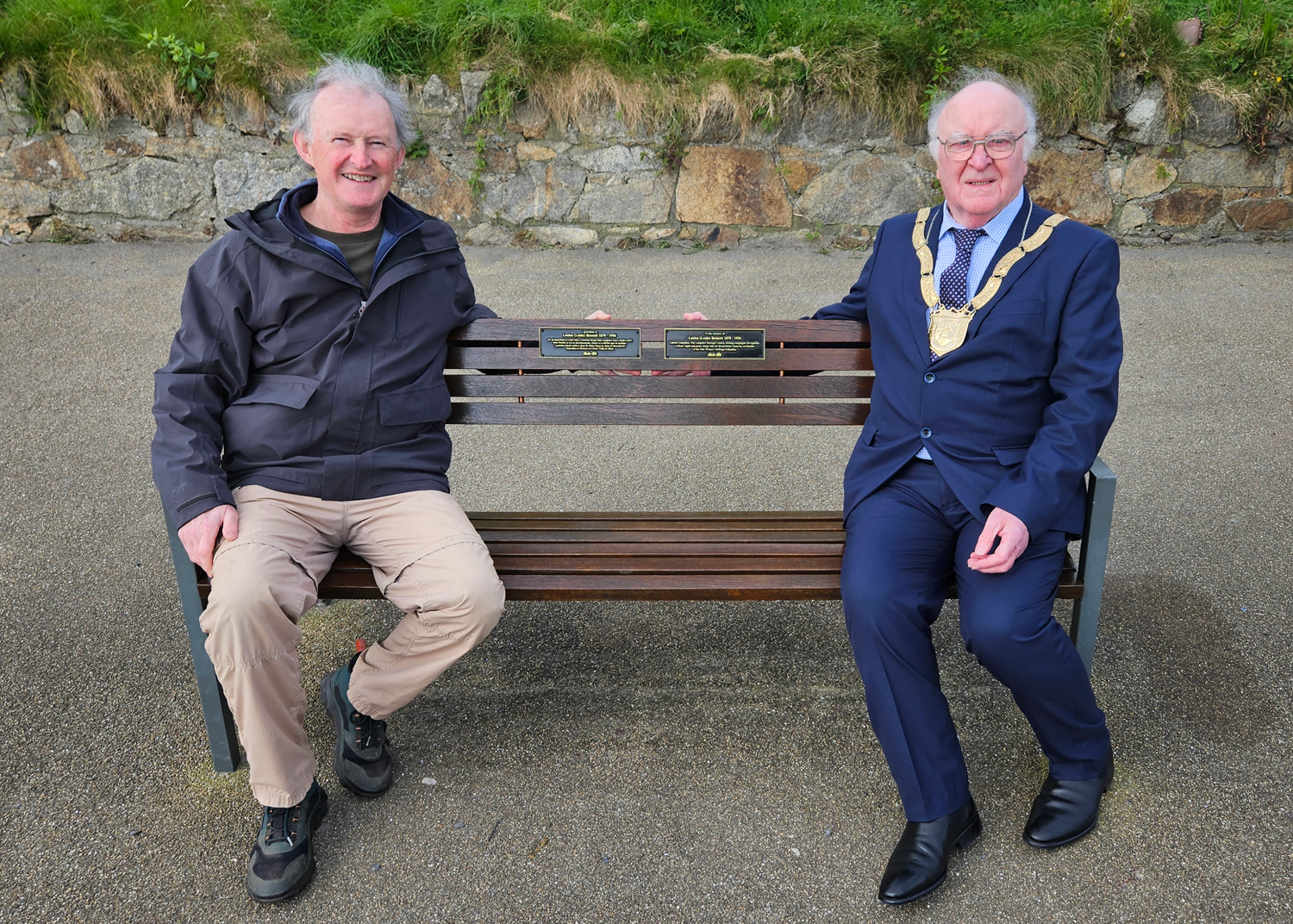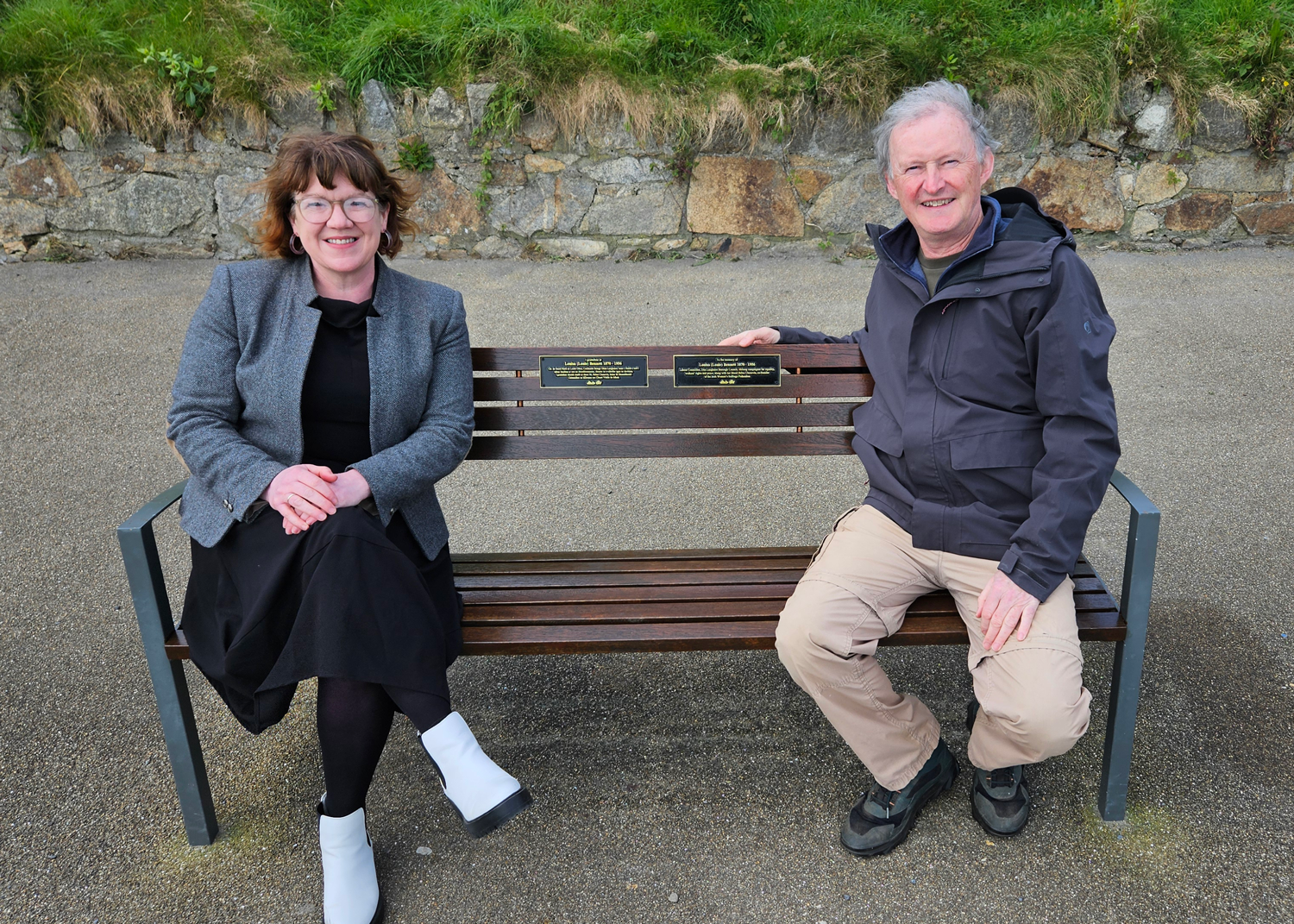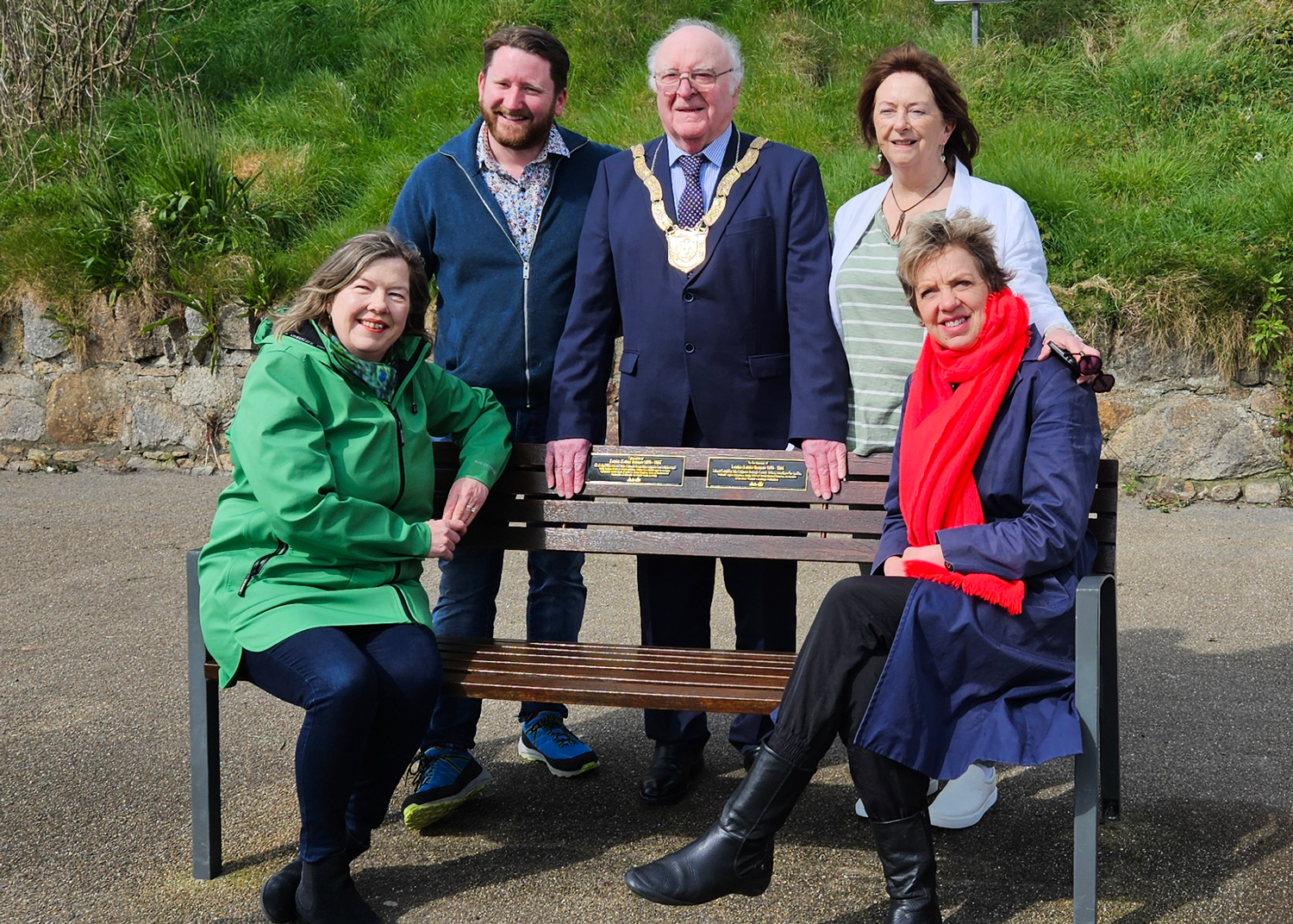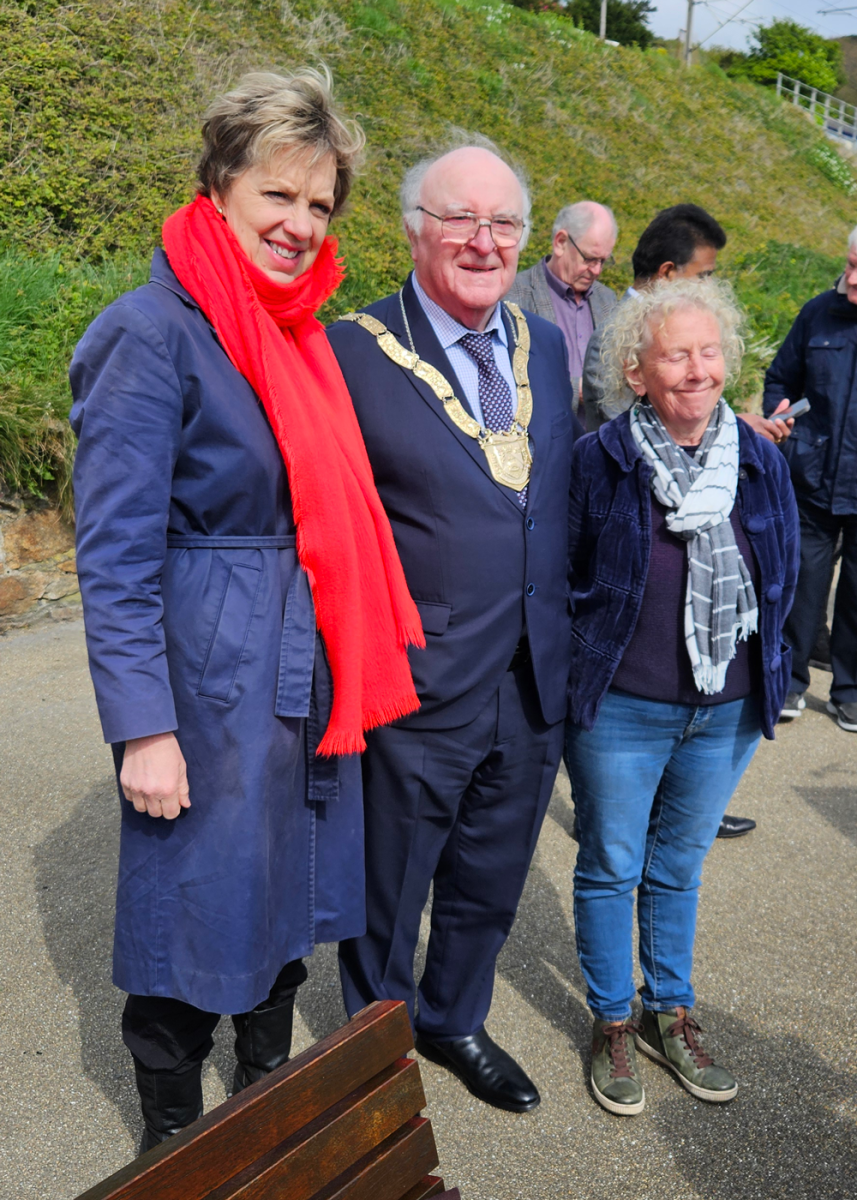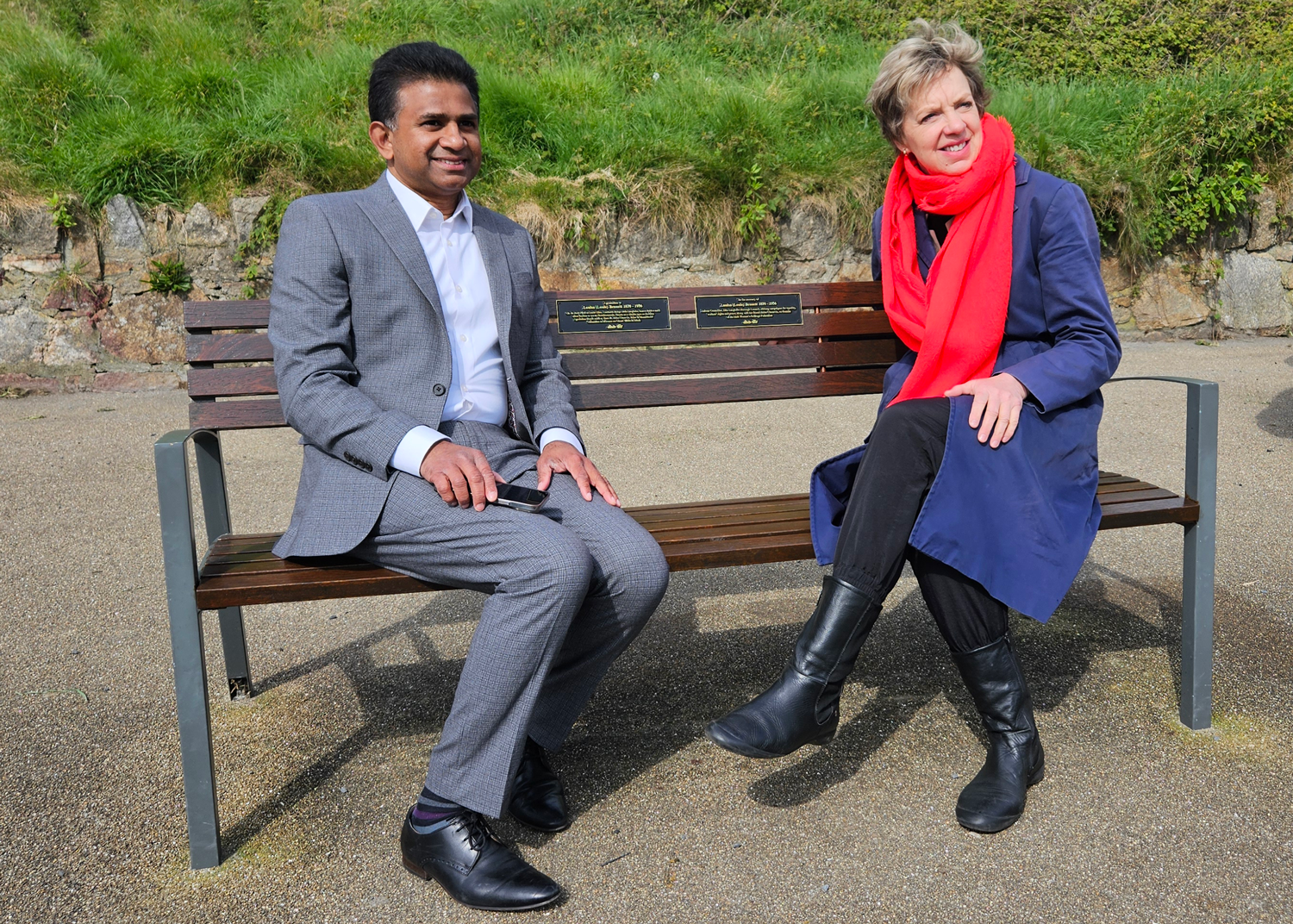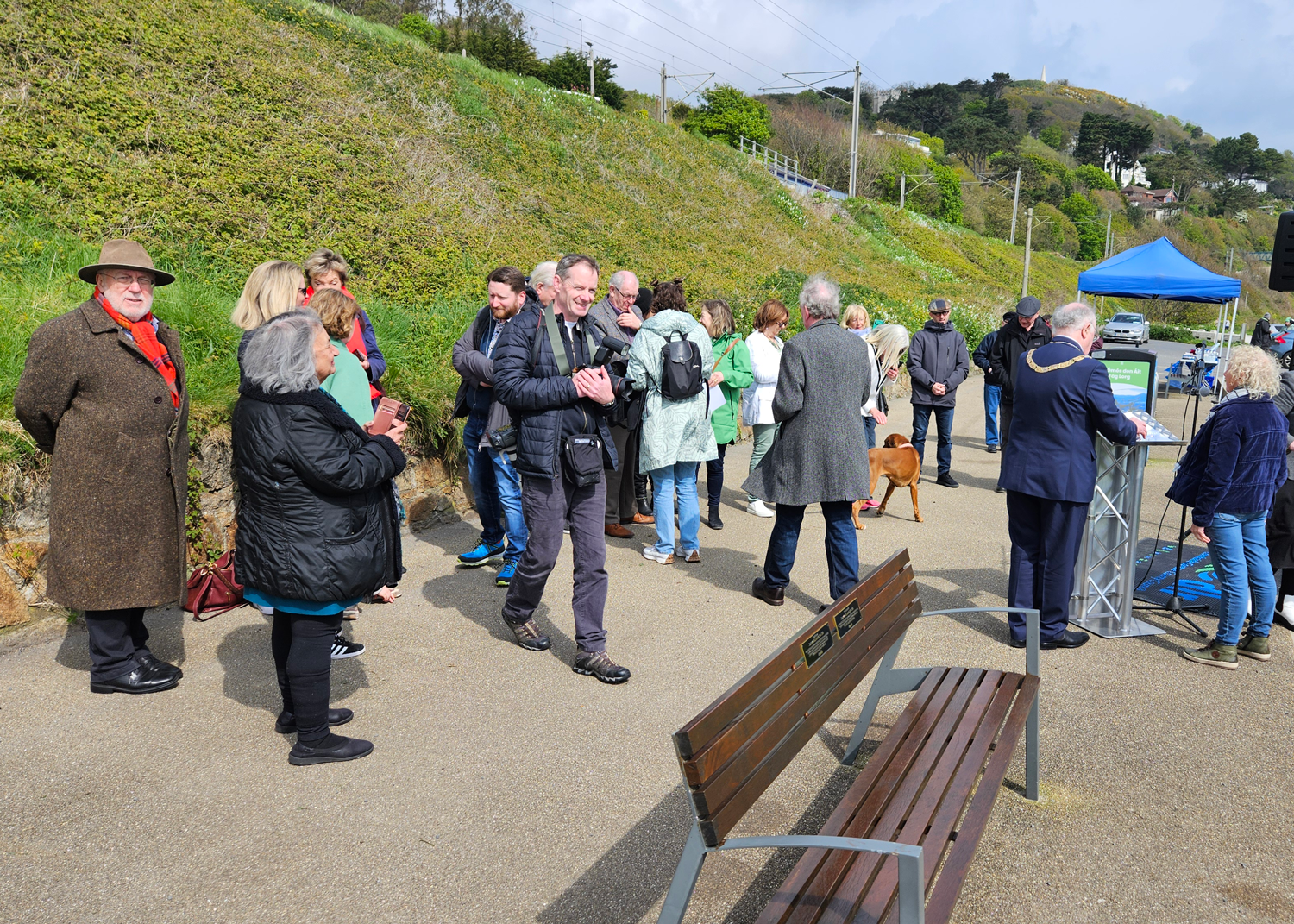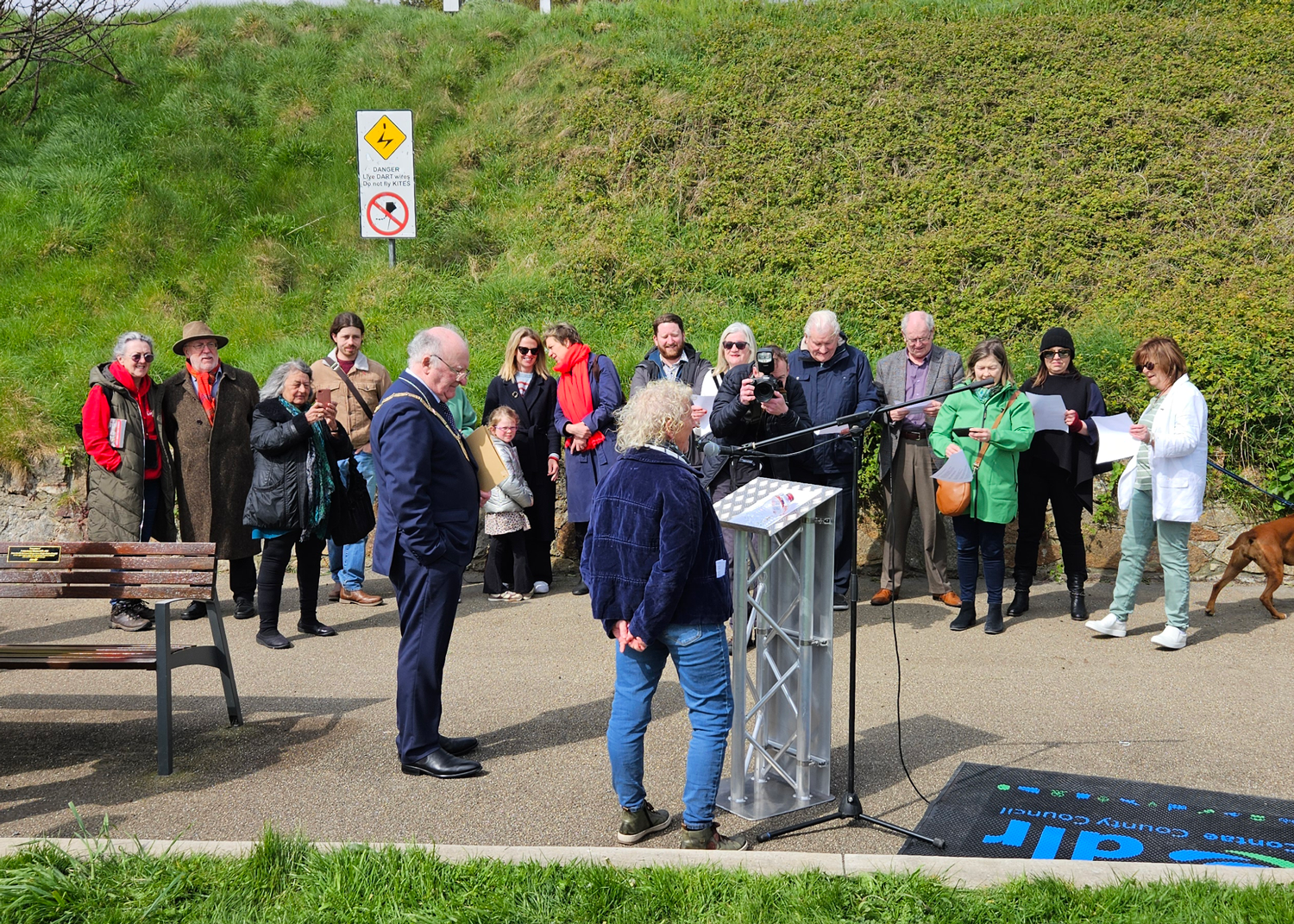Louie Bennett memorial unveiling at Killiney Beach
Introduction
On Saturday 27th April 2024 An Cathaoirleach, Councillor Denis O’Callaghan unveiled a memorial bench at Killiney Beach in honour of Louie Bennett. Killiney Historical Society was present to record this occasion and are pleased to present this video of the event which celebrated the life and achievements of Killiney resident Louie Bennett (1870-1956).
Watch the video here
Speech by An Cathaoirleach, Councillor Denis O’Callaghan
Louie Bennett-The Local View
Welcome to Everybody.
My interest in Louie Bennett started in a conversation with our dear friend, the late Niamh Breathnact, telling me that Louie Bennett represented the Killiney-Ballybrack Ward on Dunlaoghaire Borough Council. In April 1996 Niamh as Minister for Education pioneered the launching of two stamps by An Post. One for Louie Bennett and the other for Lady Agusta Gregory. Both stamps were designed by the artist Evie Hone. We are joined as well by Niamh’s husband Tom Ferris.
For the purposes of today’s event, I will confine my remarks to the person Louie Bennett was and her connection to the Killiney area.
I have no doubt Louie would have spent a lot of her down time relaxing, walking with her family, friends and alone on this very Beach, taking in the beauty of Dublin Bay and the wonderful local amenity of Killiney Beach on her doorstep. If you closed your eyes and go back in time you can visualise her strolling deep in thought towards us asking what all the fuss is about.
Born on 7th January 1870 in Rathgar, Louie spent her early years on Temple Road, Blackrock. Her father, James Bennett, was a fine art auctioneer and valuer on Ormond Quay. Her mother, Susan Boulger, came from a family of some social standing in Dublin whose own parents disapproved of the marriage as she came from a British Army family who did not approve of their daughter marrying “into trade.”
Louie Bennett was one of 10 children, 5 brothers and 4 sisters, one of whom passed as an infant. Her family later moved to Killiney, overlooking the Bay and not far from Killiney Beach where the memorial bench is located. A Jas C. Bennett is listed as resident of Bella Vista on Killiney Hill Road from 1900-1907 and at Undercliff on Strathmore Road in 1910.

Louie lived in St Brigid’s on Kilmore Avenue (now called Waterdale) possibly from 1932 until she died in 1956. St. Brigid’s is next door to Tigin where Helen Chenevix lived. The family also has connections with Gayfield on Seafield Road and Thom’s Directory lists Susan Bennett living at this location from 1920-1930. Thank you to Michael Mc Shane of Killiney Historical Society for pointing me to where she and the family lived.
In the 1911 census she was noted as residing at 144 Killiney and as Suffragist, Pacifist, and Trade Unionist. She was a collaborator and friend of Helen Chenevix since at least 1911, they lived beside one another and later together. She stood as a Candidate in the 1920 election for the Killiney-Ballybrack UCD, South Ward – among the first women to stand as candidates for Labour along with Helen Chenevix, and Mary Catherine Kelly. She had the distinction of being the only woman Labour candidate in the greater Dún Laoghaire Rathdown – she unfortunately was unsuccessful.
In 1942 Dun Laoghaire Borough Council the aggregated vote saw Louie Bennett elected with George Dixon for Labour. I have a sense of pride that she shared the ward represented today by Carrie and myself and in the recent past by Eamon Gilmore, Pat Fitzgerald and Carrie’s late Father Frank.
All of the detail with regards to Labour Councillors and candidates is contained in the book by Chas Callan and Barry Desmond and published by Umiskin Press. A wonderful reference book for political anoracks. As a result, it is notable that Louie Bennett was the first Labour woman to serve as a Councillor in Dun Laoghaire. At the same time her long-time friend Helen Chenevix was the first Labour woman elected to Dublin City Council. In the 1944 general election she was one of 3 Labour candidates in the Dublin Constituency – they were unfortunately unsuccessful. In the 1945 local election, then aged 75, she did not seek re-election.
Louie Bennett passed away at her home in Killiney on 25th November 1956, aged 86 and she was Buried in Deansgrange Cemetery.
I will now read a letter from President of Ireland, Michael D. Higgins.
Thank you to the Memorials Committee, and its chair Deirdre Black, Heritage Officer. Thank you to the Deansgrange and Cemetery Staff who care for Louie’s grave. Thank you to Ivana Bacik TD who joined us this morning. And thank you to all staff who helped make today possible.
With thanks to An Cathaoirleach, Councillor Denis O’Callaghan for making his notes available for this article.
Speech by Ivana Bacik TD
Distinguished Guests, Visitors, Friends, and Colleagues,
I would like to thank An Cathaoirleach, Councillor Denis O’Callaghan, for the kind invitation to deliver an address here today on this historic occasion, as we unveil Louie Bennett’s Memorial Bench. As leader of the Labour Party and as a proud trade unionist and feminist, I am delighted and honoured to mark the life of Louie Bennett, a Labour woman who made such an important contribution to the Irish labour and feminist movement.
Louie’s story has always been one of immense significance to me. It is hugely important that we remember and honour our shared history of struggle on this island, the struggle for independence, for women’s rights and for workers’ rights. Louie, alongside Helen Chenevix, founded the Irish Women’s Suffrage Federation in 1911, to bring together Irish suffrage societies and forge links with similar organisations in Europe and the US. She also set up the Irish Women’s Reform League to campaign on social issues that affected women, such as working conditions, legal rights, education, and social welfare.
During the 1913 strike and lockout in Dublin, she helped in the relief efforts in Liberty Hall and sought to raise funds for the families of the locked-out workers through the Irish Citizen.
In late 1916, she accepted the invitation to reorganise the Irish Women Workers’ Union, founded in 1911 by Delia Larkin, because other unions wouldn’t accept women members. With the help of Chenevix and others, Louie succeeded in revitalising the union and achieving a dramatic increase in membership. She kept the union independent of Liberty Hall and male-dominated unions, on the grounds that women’s concerns would always take second place in such unions.
Her opposition to World War I led to her being chosen as the Irish representative to the Women’s International League for Peace and Freedom. She campaigned against conscription in 1918, went to America in 1920 to highlight Black-and-Tan atrocities, and acted as a mediator during the Civil War. Louie was appointed to the Irish Trade Union Congress (ITUC) in 1925 and she worked to promote working-class education and adult education. A member of the national executive of the ITUC from 1927 to 1932, she became its first woman president in the latter year.
In 1943, she was elected a Labour Party councillor in Dún Laoghaire, where she campaigned consistently for improved housing. As an elected member of our party’s national executive, she represented Ireland at the International Labour Organisation in Europe and was also a representative at the League of Nations. She was a consistent opponent of imperialism, fascism and militarism throughout her public life. Perhaps one of her most celebrated achievements was her leadership in the 1945 laundry workers’ strike through which the IWWU won the right to a fortnight’s paid holiday – a right which subsequently all Irish workers came to enjoy.
Unfortunately, too many times women have been erased from the annals of Irish history. I think now of Nurse Elizabeth O’Farrell who was airbrushed from history, despite having delivered the surrender alongside Padraig Pearse. Today, in Leinster House, Nurse O’Farrell is remembered in a new portrait that highlights the immense contribution of women to Irish history and also serves as a stark reminder to our erasure from history.
In this sense, this bench to Louie Bennett can be seen as just one stage of an ongoing commemoration process where we bring the stories of Irish women out of the dark, as inspiration for all those who fight for freedom and for basic human rights. I think it is very important that permanent monuments like these are initiated, so that the memory of Louie Bennett will last beyond the memories of standing here today, and continue to inspire for generations.
The Rosie Hackett Bridge, named by Dublin City Council as part of a campaign initiated by Labour activists, trade unions and women’s groups, is another example of the process of bringing the history of Irish women into the light.
Louie Bennet was a woman who understood that the struggle for women’s rights was interlinked with the labour movement. This is a philosophy that has always informed my own political work and the work of women in Labour. From equal pay for equal work, to the marriage bar to ending sexual harassment at work, some of the most important feminist battles have always been fought in the workplace.
I am proud to be a part of a Labour history that has championed the rights of women and workers at the same time, and I am proud to have Louie Bennett as a role model for Labour women. I look forward to coming to this bench in the future, to enjoying the wonderful sea views, and to remembering Louie for her lifelong public service and her commitment to social justice.
With thanks to Ivana Bacik TD for providing her notes.
